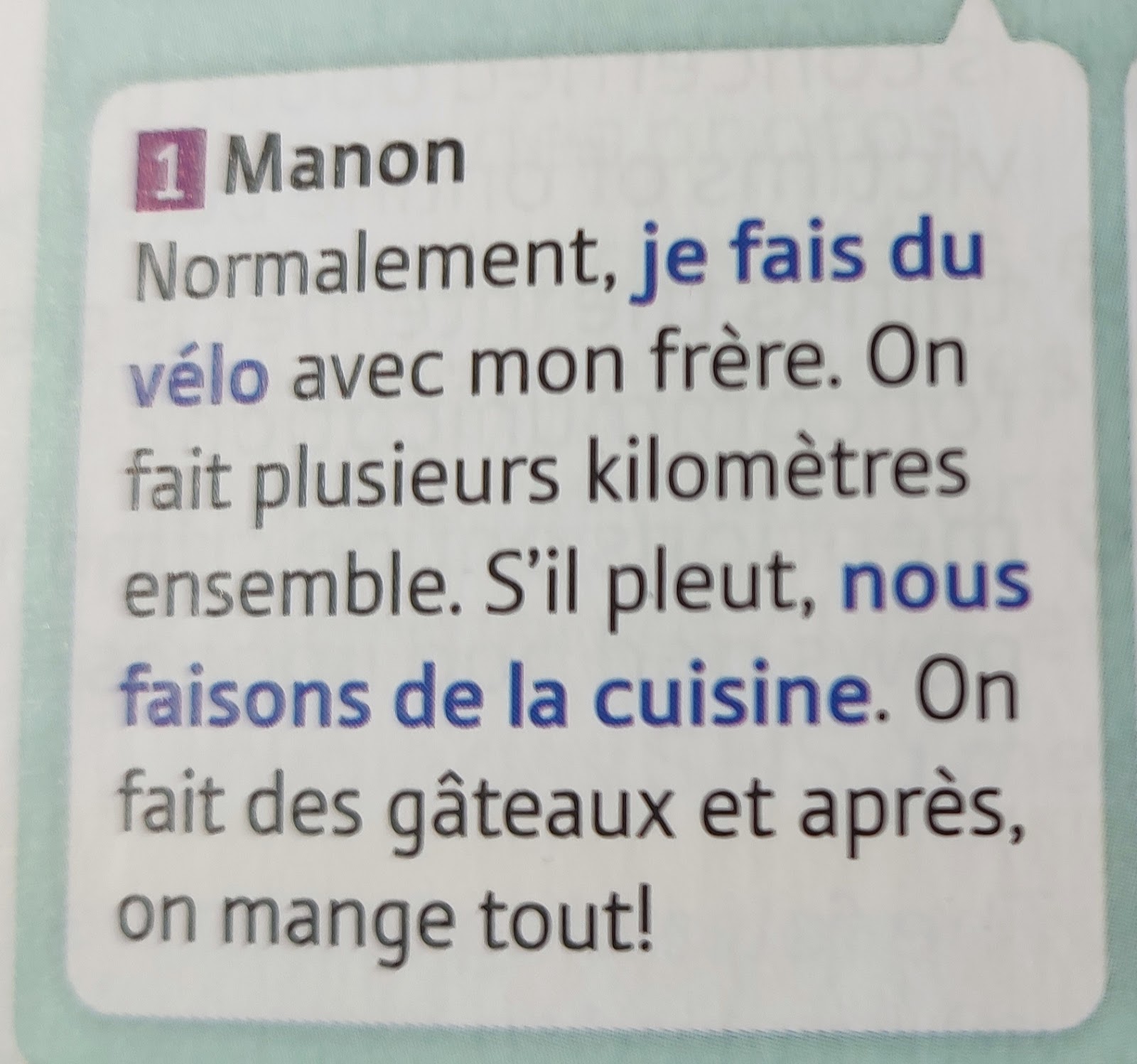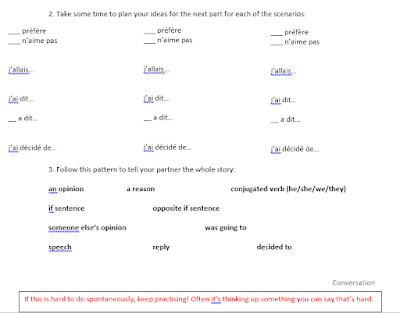I am very much enjoying working through the new GCSE textbook as I plan for the new GCSE starting in September. They have achieved a good balance between progression and accumulating language, and sharp focus on developing pupils' exam skills in a cultural and motivating context. It's a great fit for the overall vision we have in our school of how we want the course to work for our pupils. I have been creating a booklet to go with Module 1 to really draw this out and get us off to a great start.
In this post I am going to show you one clever way to make use of the texts and activities in the book: Cheating Translation.
Put simply, Cheating Translation is where you have a series of texts for pupils to translate - some from English into French, and some from French into English. And what you do, is you hide the language pupils need for one translation, inside one of the other texts. So they can do most of the translation using language they know, but if they are stuck, they know they can hunt for the words in the other texts on the page.
Here's an example from our Year 8 Unit 1 booklet.
You can see that text B helps pupils with text A. And text A helps pupils with text B. This is great for a cover lesson where you need a worthwhile activity that works smoothly for the cover teacher.
So how does this work to make using the new GCSE textbook go smoothly?
This is from the Module 1 Booklet I have written to go with the new textbook.
You can see from the list that there is an awful lot going on on this page. Irregular verbs, plus jouer à, jouer de, faire du sport, j'aime le sport and important time words. All of these things must not just be seen but actually learned. With attention drawn to them and planning for how they will be met again and again, and added to the repertoire of French which pupils can use confidently and accurately.
Here's the first text on the page:
 |
| Pearson AQA GCSE French |
This "Manon" text is in fact one of four in the first exercise. And what the book does is ask the pupils to look at all 4 texts and match them to the pictures. This is a perfectly logical way in. The pupils have a first read through of the text, picking out the vocabulary for the activities (cooking, cycling etc) and matching them to the pictures. It's a natural and important way to approach the text. But it works entirely by asking them to find obvious known language or cognates, and ignores entirely the features of the text which are actually useful.
Of course there are follow up tasks. Firstly to translate the sentences in blue which contain the irregular verbs. And then secondly to find mentions of other people in the texts. Although this will need teacher input to steer pupils away from just listing her brother, her friends and actually focus on nous and the verb endings.
The various other features such as jouer de, faire du, are picked up in grammar boxes on the page, but I want to get as much as possible out of the text itself.
Let's look at just the Manon text again:
It's fabulous. It's just what's needed as pupils move from KS3 to GCSE. They are already brilliant at saying what they like to do and why, adding if sentences and linking it up. They are poor at adding convincing detail, nuance and they are only just starting to work out how to move from talking about themselves to talking about other people, either as a conflict of opinions or as working together.
I want to get at the move between je... mon frère... nous... on... And I want the nuance words like tout and plusieurs, the time words like après and normalement, and the handling other people words like ensemble.
We know in an AQA markscheme for the reading exam a candidate who writes "They cycle a long way with their brother" might get 0 marks if AQA insist it has to contain the words several and together. We know they do that in the current GCSE. And in the new GCSE with its increased focus on high frequency vocabulary, they are just as likely to work this way. And in planning our teaching for the new GCSE, I am also determined to keep the focus on these non topic words which can appear in any text. And which also make the difference, in pupils' own speaking and writing, between a good candidate and an outstanding one. Ultimately these are the words which allow pupils to frame narrative, move coherently from one idea to another, and to develop longer, detailed answers.
So where does Cheating Translation come in?
Have a look at this translation text and compare it to the Manon text.
It is designed so that pupils can translate almost all of it from their repertoire of French. But it is deliberately a mirror of the text they are going to meet when they get to the Manon text in the book. So when they meet a word they don't know, they can find it in the Manon text.
It is doing two things, both as important as each other. In doing the tennis/football translation, it is showing them how to extend and give detail/nuance to an answer they can already produce. They see that the words in bold type naturally fit well into their repertoire and enhance their expression.
And secondly it means that the first time they encounter the Manon text, it's not as a problem or a threat or a challenge. It's as a useful helping hand. It gives them the words they need. Instead of tackling the text as a skimming for known words exercise, it takes them straight in to looking for unknown words. And very useful unknown words!
But that's not even half of how Cheating Translation works! Next you can do this!
They move from translating my mirrored text into French, using the Manon text for help, to translating the Manon text into English, using my mirrored text for help if needed. And then they shut the textbook and translate it back into French. You can choose whether to do this as a sequence of translations in one lesson, or if you want to spread it out over several lessons to boost the requirement for pupils to retain and retrieve what they learned in the previous lesson.
So instead of fishing around in the Manon text for known words and then new grammar, they are straight in to working with every word in the sentence, for comprehension and for extending their own repertoire of French. The support is there to make them successful, the challenge is there, and the vision of how it all builds their learning is definitely there.
This idea of rewriting texts from the textbook on different topics is something I am going to continue. Either as here to anticipate texts, or to deliberately revisit them in new contexts later. As well as revisiting being important for retaining vocabulary, you can see from this example that it's even more important for switching the focus to the non topic words and for how they are integrated into the pupils' repertoire, ready to be deployed.



















